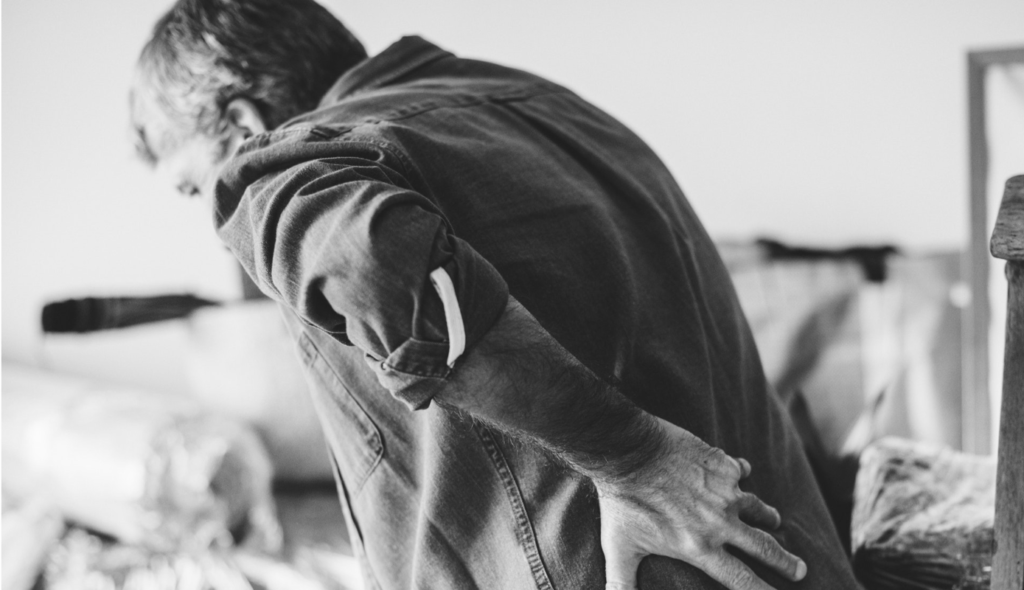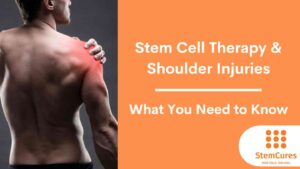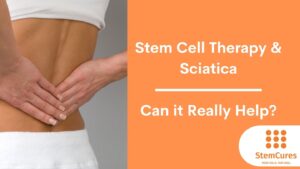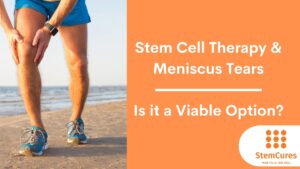Stem Cell Therapy and Discitis
Lower back pain is one of the most common medical complaints worldwide and the most prevalent cause of disability among Americans between 45 and 65 years of age. It is also the second most frequent reason for a physician office visit and is a common reason for lost workdays. Moreover, it is the third most common diagnosis associated with surgical procedures.
Unfortunately, back pain is very challenging to treat. Recommended nonpharmacological treatments such as acupuncture, spinal manipulation, exercise, multidisciplinary rehabilitation and cognitive behavioral therapy along with pharmacological treatments like NSAIDS, muscle relaxants, opioids, and antidepressants have not been very successful.
Interventional procedures like epidural, facet joint and sacroiliac joint injection along with spinal cord stimulation do not always alleviate low back pain.
When the above modalities fail, patients resort to surgery. Sadly, surgical outcomes for back pain are not very flattering.
Therefore, there is a constant demand for innovation to treat back pain. Currently, Stem Cell Therapy seems to be the most promising.
Based on different studies, the lumbar discs seem to be the main culprit of back pain. Injecting lumbar discs with stem cells is showing a lot of promise in preliminary studies.
We have treated about 150 patients who were suffering from back pain with bone marrow stem cells. These were challenging patients who failed multiple modalities, enduring pain for many years, and many with severe spinal degeneration on the MRI. Our anecdotal results in this patient population have been excellent. Not only does a high percentage of patients have a high percentage of pain relief, but the results seem to be long-lasting.
However, we were surprised when one patient developed discitis.
Over a period of more than 20 years, we have performed a multitude of disc procedures including diagnostic discograms and therapeutic IDET, Nucleoplasty and Dekompressor etc and never had a single case of discitis. Intradiscal injection of stem cells usually leads a flare-up in pain which typically lasts a few days to a week. At the 2 week follow up visit, our patient continued to complain of severe pain. MRI with contrast revealed L34 discitis. L45 and L5S1 discs were also injected but did not get infected. The patient was hospitalized and treated with antibiotics aggressively. Blood cultures and disc cultures were negative for any bacterial and fungal organisms. Interestingly, her WBC was never abnormal and she never spiked a fever during her entire course. Sedrate and C-Reactive Protein [CRP] were initially elevated and they eventually normalized with the antibiotic treatment.
Since I was stumped with this case, I reached out to my regenerative medicine colleagues through different forums and meetings to find out more about discitis and stem cell therapy. What I found astounded me.
- There were 8 other physicians who reported discitis in patients when they used intradiscal stem cells.
- 5 of these 8 physicians are experts who give national talks about stem cell therapies.
- None of the 8 physicians had discitis from other disc procedures. Discitis was seen only when they performed intradiscal stem cells or PRP [Platelet Rich Plasma].
- This was a rare complication among their patients.
Based on this, a few conclusions can be drawn.
- One of the unique complications of intradiscal biologics is discitis.
- It happens even in expert hands
Why is discitis occurring with stem cell therapy?
There are 2 theories.
The first is external contamination. Stem cells have to be extracted and then placed in a concentrating device which is then placed in the centrifuge. The concentrated stem cells then have to be removed from the device and injected back into the disc. Regardless of how meticulously sterile this process is, sometimes contamination is inevitable.
The second theory is that somehow the stem cells are activating the latent bacteria which is already existing in the disc. Are the stem cells acting as a Petri dish?
This leads to a very important question.
How To Prevent Discitis?
- BE PARANOID. Take all the necessary steps during the procedure to maintain sterility. Prep and drape the patient like you are performing surgery. Use surgical drapes and C-Arm sterile cover. Wear a surgical gown, surgical mask/cap, double glove, etc. Be extra cautious about sterility while transferring stem cells from the patient into the concentrating device and also when removing the stem cells after centrifugation. Pay attention when injecting the cells back into the disc.
- Most of these procedures are done in an office setting. Get the ventilation ducts of the procedure room cleaned periodically. Install bacteriocidal ultraviolet bulbs in the ventilation ducts.
- Chlorhexidine-based preps may provide better protection than povidone-iodine preps.
- Use the double-needle technique unless the disc is very collapsed
- Use 2 grams Cephazolin IVPB 30 mins before the procedure. If the patient has an allergy to cephalosporins or PCN, use 900mg of Clindamycin. We were using 1 gm cephazolin or 600mg clindamycin before.
- Use Cephalexin 750mg TID PO for 10days starting a day before the procedure as prophylaxis.
- Consider intradiscal antibiotics. Gentamycin 1mg/ml or cephazolin 1mg/ml is the usual dose. We do not use intradiscal antibiotics as they can be cytotoxic to the injected stem cells.
- After stem cells are extracted, do a second prep prior to placing needles into the disc.
- Minimize the amount of “disc time” for the needles. Place the needle in the disc, inject the biologic and remove the needle.
How to Diagnose and Treat Discitis after Stem Cell Therapy?
Most patients have increased back pain for a few days to 1-2 weeks after the procedure. If a patient is having persistent severe pain which is not getting better even after 2 weeks, there should be a high index of suspicion for discitis. Most commonly they present with non-radicular axial pain. Tenderness on palpation is very common. Fever is frequently absent. If you suspect discitis, act on it immediately to prevent further deterioration of the spine from infection. Order MRI scan with contrast, Sedrate, CRP and CBC. Although WBC may not be elevated, Sedrate and CRP are usually are high. The post-procedure rise in CRP usually comes down by about 10 days while ESR takes about 3–6 weeks to come down. Hence, unexplained rise in CRP values any time beyond 2 weeks of procedure should be viewed with suspicion. Contrast MRI will give you a definitive diagnosis. Once a diagnosis is made, admit the patient to the hospital and obtain an ID consult right away to place the patient on the appropriate broad-spectrum antibiotics. Try to get a disc aspiration cultures and blood cultures before antibiotics are started because they decrease the culture yields. Neurosurgical consultation may be required if the patient has persistent pain, persistent infection deformities on MRI or neurologic deficits. Sedrate CRP can be used as a marker to assess if the patient is responding to antibiotics.
At this point, I want to emphasize that the risk of discitis after stem cell therapy is extremely low.
Although rare, discitis is a known complication after lumbar spinal surgery with an incidence ranging from 0.21% to as high as 3.6%. The incidence of discitis after discograms ranges from 0 to 4.9%. In our experience, it was 1/150 patients [0.6%]. We typically inject 2 discs in each patient making the risk is 1/300 per disc [0.3%].
However, since it is a very painful condition, one is too many. We should do whatever we can to avoid this complication.
In conclusion, Discitis after stem cell therapy is an extremely rare complication that should be diagnosed early and if treated aggressively, most patients have a reasonable outcome. Intradiscal Stem cell therapy has the potential to be the future for treating intractable back pain. The onus is on us to prevent complications so it can be a viable option for many patients suffering from chronic back pain.













